Mold can be a nasty thing. It makes your possessions look gross, but it can also be dangerous to your health. If you’ve ever had moldy leather, you know how frustrating it can be to try and clean it up. But don’t worry, removing mold from leather is pretty easy! This article will show you how to remove mold from leather bag using just a few simple ingredients. So read on, and learn how to get that moldy bag looking good as new in no time!
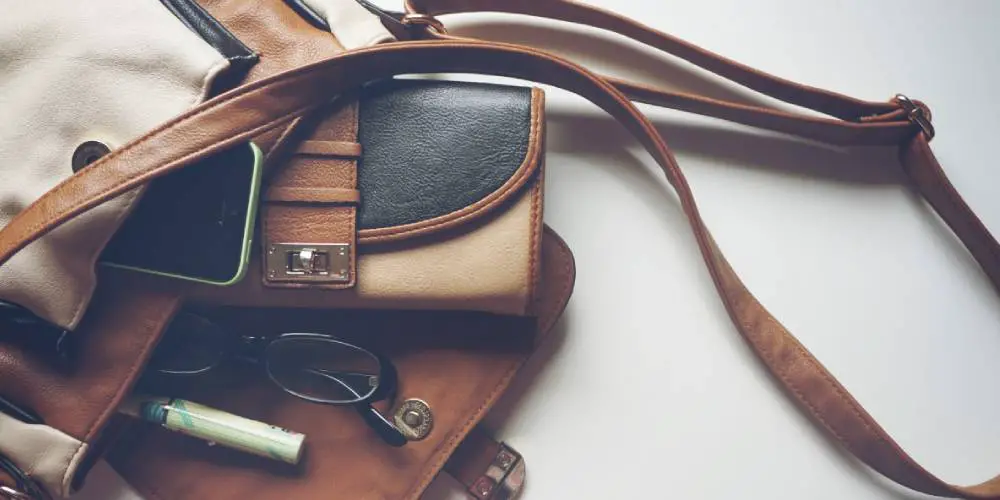
Leather bags are susceptible to mold and mildew because they are often stored in moist, humid places. Mold spores are everywhere, and when they come into contact with leather, they can quickly take hold and begin to grow. If you’ve noticed mold on your leather bag, it’s essential to act quickly. The longer you let the mold grow, the more difficult it will be to remove.
What Causes Mold on Leather?
Mold is a common problem for leather goods. It can cause the leather to deteriorate and make it unsafe to use. Mold often grows in dark, damp places, such as closets or storage rooms. It can also be caused by exposure to high humidity or leaking water. When mold spores come into contact with leather, they can begin to grow and reproduce.
Leather is an ideal material for mold growth because it is porous and provides a food source for mold spores. Mold can cause the leather to become discolored, cracked, and brittle. In some cases, it can also cause an unpleasant odor. If you suspect that your leather goods have been contaminated with mold, it is essential to clean them immediately. You can clean mold from leather using a variety of household products.
How to Remove Mold From Leather Bag Step by Step Guide
Step 1: Identify the Affected Area
Before starting the cleaning process, it is crucial to determine how much of the bag is affected by mold. If mold has only begun to grow on the surface of the leather, it may be possible to clean it without damaging the material. However, if the mold has penetrated deep into the leather fibers, it may be necessary to replace the affected area.
Step 2: Inspect the Bag for Damage
Once you have determined how much of the bag is affected by mold, it is essential to inspect it for any damage. If the mold has penetrated deep into the leather fibers, there is a chance that it has caused irreparable damage. In this case, it may be necessary to replace the entire bag.
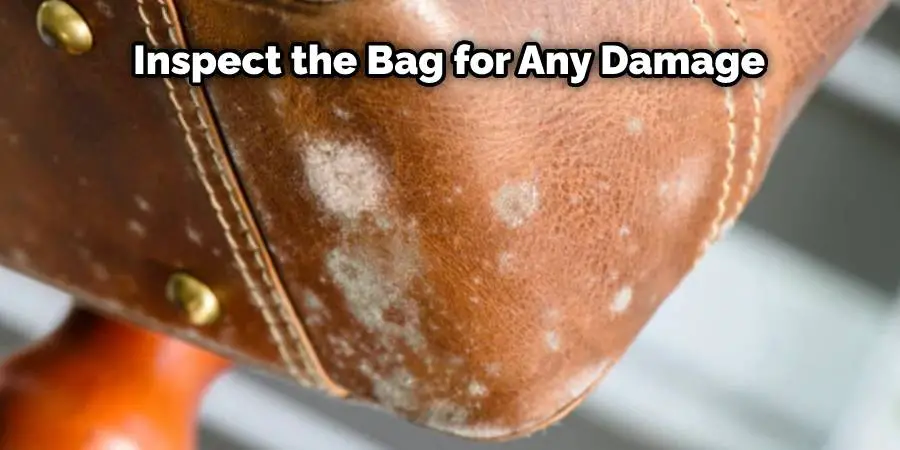
Step 3: Treat the Area With Saddle Soap
If you’re dealing with a small mold problem, you can treat the area with saddle soap. Saddle soap is designed to clean and condition leather, and it can also help kill mold spores. Saddle soap is a cleaning product used to clean and condition leather. It is made from ingredients including sodium tallowate, coconut oil, sodium palmate, glycerin, and water. To treat the moldy area on your leather bag with saddle soap,
Check It Out: How to Fix Over Conditioned Leather.
You Will Need:
- A small bowl
- A clean cloth
- Saddle soap
- Water
Determine the size of the affected area. If the moldy area is small, you can treat it with saddle soap. If the moldy area is large, you will need to take your leather bag to a professional cleaner.
Mix 1 part saddle soap and two parts water in a small bowl. Stir until the saddle soap is completely dissolved.
Dip a clean cloth into the saddle soap solution. Then, gently rub the solution into the moldy area on your leather bag.
Allow the saddle soap solution to dry on your leather bag. Once it is dry, you can wipe it off with a clean cloth. If the moldy area is still visible, you can repeat the process until it is gone.
Step 4: Disinfect the Area With Vinegar
If the moldy area on your leather bag is large, you need to take it to a professional cleaner. If the moldy area is small, you can disinfect it with vinegar. Vinegar is a natural disinfectant that will kill the mold spores and prevent them from returning. It is also safe to use on leather. For this method, you will need to use white distilled vinegar. Do not use apple cider vinegar or any other type of vinegar.
You Will Need:
- A small bowl
- White distilled vinegar
- Water
- A clean cloth
Before you begin, make sure the area you are working in is well ventilated. Vinegar has a strong smell, and you do not want to be breathing it in for too long.
Start by mixing equal parts vinegar and water in the bowl. Next, dip the clean cloth into the mixture and wring it out so that it is damp but not dripping wet. Next, use the cloth to wipe down the moldy area of your leather bag. Make sure to get into all of the creases and folds. Once you have disinfected the area, allow it to air dry completely.
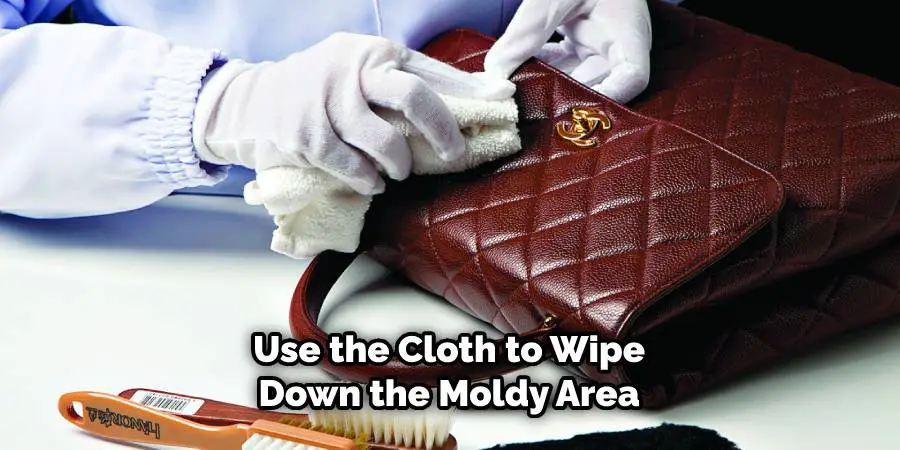
Do not use this method on suede or nubuck leather. Vinegar can damage these types of leather. If you have a suede or nubuck leather bag, take it to a professional cleaner.
Step 5: Use Baking Soda to Remove Mold and Mildew
If the vinegar smell is too strong for you, you can use baking soda to remove the mold from your leather bag. Baking soda is a natural absorbent and will help remove the musty smell that often comes with mold and mildew. It is also safe to use on leather.
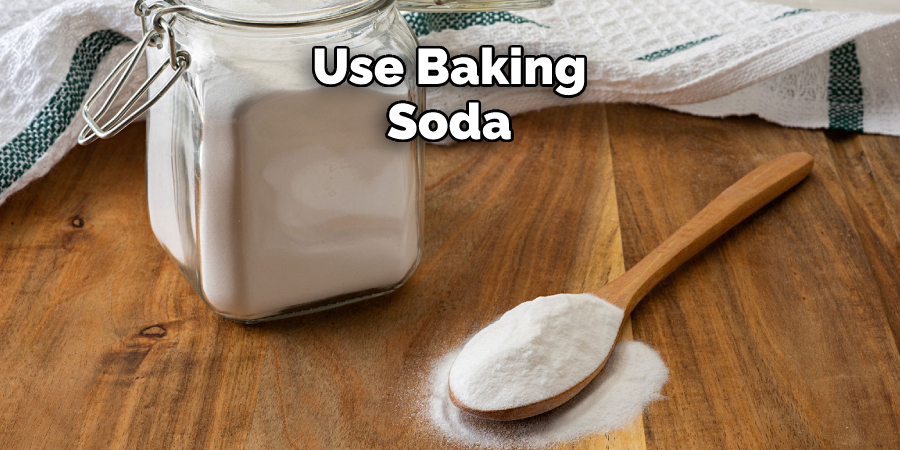
You Will Need:
- A small bowl
- Baking soda
- Water
- A clean cloth
Start by mixing equal parts baking soda and water in the bowl. Next, dip the clean cloth into the mixture and wring it out so that it is damp but not dripping wet. Next, use the cloth to wipe down the moldy area of your leather bag. Make sure to get into all of the creases and folds.
Once you have wiped down the entire area, allow the bag to air dry. The baking soda will absorb any remaining mold and mildew and should leave your bag smelling fresh and clean.
If you still see mold or mildew growth after following these steps, you may need to repeat the process or try a different method. You can also contact a professional leather cleaner for more advice on cleaning your specific type of leather bag.
Step 6: Clean Leather With Baby Shampoo
If you are looking for a gentle way to clean your leather bag, you can use baby shampoo. Baby shampoo is designed to be gentle on delicate skin, so it will not damage your leather bag. It is also a good choice for removing mold and mildew from leather.
According to cleaning expert Mary Marlowe Leverette, baby shampoo is a “mild, low-sudsing soap” that’s “perfect for leather.” It will clean your bag without stripping away the natural oils that help keep it supple.
You Will Need:
- A small bowl
- Water
- Baby shampoo
- A clean cloth
- A soft brush (optional)
Determine how much baby shampoo you will need to clean your leather bag. Add an equal amount of water to the bowl and mix to create a soapy solution.
Dip a clean cloth into the soapy solution and wring it out so that it is damp, not wet. Next, gently scrub the moldy areas of your leather bag with the fabric. You can also use a soft brush to scrub if necessary.
Rinse the soap off your leather bag with a clean, damp cloth. Be sure to remove all traces of soap, as any residue left behind can cause further damage to your bag.
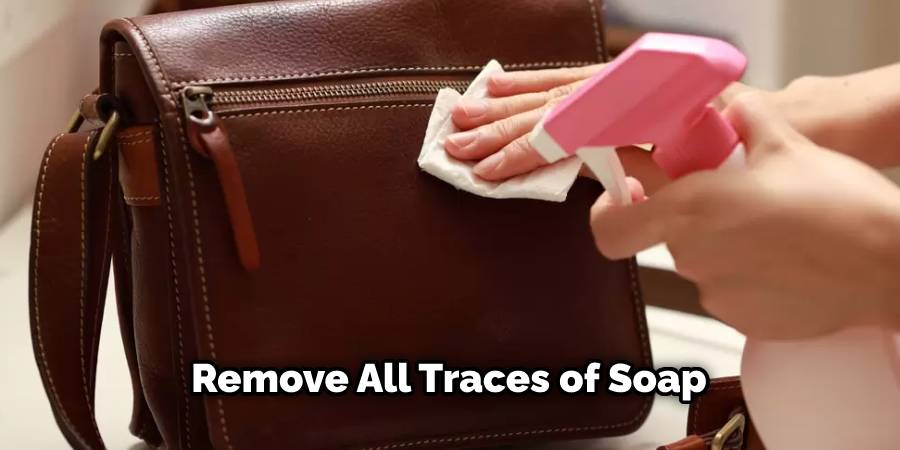
Allow your leather bag to air dry thoroughly in a well-ventilated area. Please do not put it in direct sunlight, as this can cause the leather to fade or crack.
Step 7: Condition Your Leather Bag
Once you’ve removed all the mold and mildew from your leather bag, it’s time to condition it. First, you’ll want to condition your leather bag to protect it from the elements. Leather is a natural material, and as such, it can dry out and crack over time if it’s not properly cared for.
Conditioning your bag will help keep it supple and looking its best. This will help restore the natural oils in the leather and keep it looking supple and healthy.
Your leather bag is an investment. So naturally, you want to keep it in pristine condition for as long as possible. But over time, even the best cared-for leather can become dry, cracked, and dull. The good news is that you can extend the life of your leather goods by regularly applying a quality leather conditioner. This will help restore moisture, protect against future damage, and keep your bag looking its best. This is a crucial step in how to remove mold from leather bag.
There are many different brands and types of leather conditioners on the market. So, how do you choose the best one for your needs? Here are a few things to consider:
-The Type of Leather: Conditioners are not all created equal. Some are better suited for certain types of leather than others. For example, aniline leather is a natural, unfinished leather that’s very sensitive to water and other liquids. So you’ll want to use a conditioner designed explicitly for aniline leather.
-Your Budget: Leather conditioners range in price from around $10 to $30 or more. It’s essential to find one that fits your budget.
-The Ingredients: When it comes to conditioning your leather bag, you’ll want to choose a product that contains natural ingredients. Look for conditioners that contain beeswax, lanolin, or avocado oil. These ingredients will help nourish and protect your bag without causing any damage.
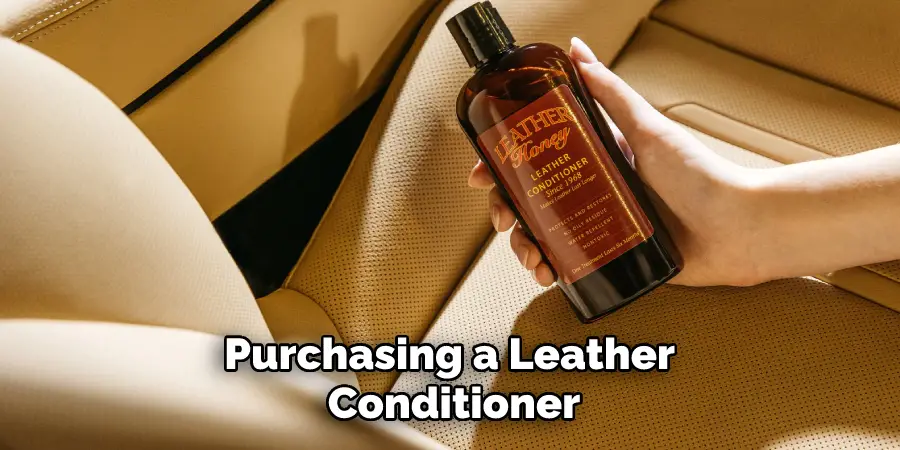
-The Reviews: Always take the time to read the reviews before purchasing a leather conditioner. This will help you understand which products are the best and which ones to avoid.
Once you’ve considered these factors, it’s time to choose a leather conditioner and get to work. Here’s a quick overview of how to condition your leather bag:
Start by cleaning your bag with a mild leather cleaner. This will help remove any dirt, dust, or grime accumulated on the surface. Next, apply a small amount of conditioner to a clean cloth. Next, gently rub the conditioner into the leather in a circular motion.
Allow the conditioner to soak into the leather for 10-15 minutes before wiping away any excess with a clean cloth. Finally, buff the leather with a soft cloth to bring out its shine.
Conditioning your leather bag is integral to keeping it looking its best. By taking the time to do this regularly, you’ll extend the life of your bag and keep it looking fabulous for years to come.
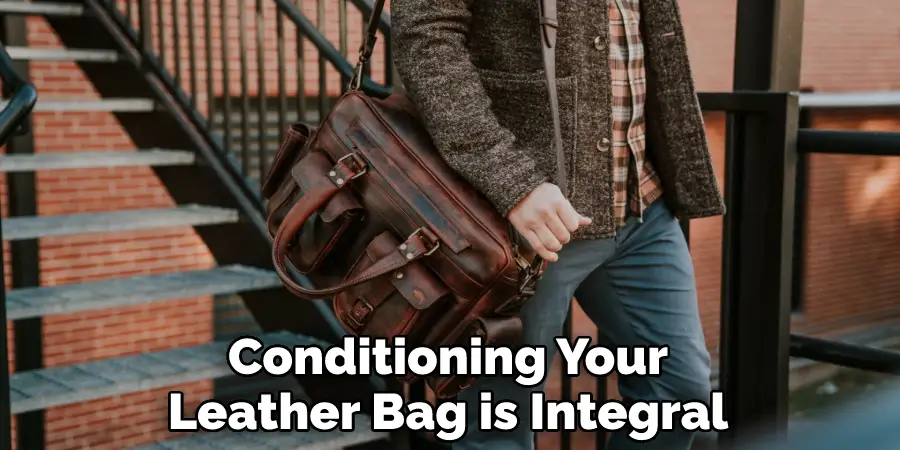
Step 8: Store Your Leather Bag Correctly
Now that you’ve learned how to remove mold from leather bag, it’s time to focus on prevention. The best way to prevent mold and mildew from growing on your leather bag is to store it correctly. Here are a few tips to keep in mind:
- – Store your leather bag in a cool, dry place. Avoid storing it in direct sunlight or near any heat source.
- If possible, store your leather bag in a breathable cotton dust bag. This will help protect it from dirt, dust, and other debris.
- Fill your leather bag with tissue paper before storing it. This will help maintain its shape and prevent creasing.
- Check on your leather bag periodically to ensure no mold or mildew is growing.
You can help prevent mold and mildew from growing on your leather bag by following these tips. And if you do notice mold or mildew, you now know how to remove it quickly and easily.
Why Do Mold and Mildew Grow on Leather Bags?
There are several factors that contribute to an environment that encourages the growth of mold and mildew on leather bags. Some of the most common reasons include:
- High humidity – Moisture from humid air encourages the growth of mold and mildew.
- Poor ventilation – A lack of airflow in certain areas creates trapped pockets of moist air, enabling mold and mildew growth.
- Lack of cleaning or maintenance – Without regular cleaning or maintenance, particles such as dirt, oil, food residue, sweat, or dust accumulate on the bag’s surface, providing fungi nutrients.
Prevention is key in keeping your leather bag looking its best! To avoid mold and mildew growth, clean your bag regularly with a soft cloth dampened with a good quality leather cleaner, and store it in a cool, dry place away from direct sunlight.
Why Do Mold and Mildew Grow on Leather Bags?
There are several factors that contribute to an environment that encourages the growth of mold and mildew on leather bags. Some of the most common reasons include:
- High humidity – Moisture from humid air encourages the growth of mold and mildew.
- Poor ventilation – A lack of airflow in certain areas creates trapped pockets of moist air, enabling mold and mildew growth.
- Lack of cleaning or maintenance – Without regular cleaning or maintenance, particles such as dirt, oil, food residue, sweat, or dust accumulate on the bag’s surface, providing fungi nutrients.
Prevention is key in keeping your leather bag looking its best! To avoid mold and mildew growth, clean your bag regularly with a soft cloth dampened with a good quality leather cleaner, and store it in a cool, dry place away from direct sunlight.
Tips to Prevent Mold From Attaching to Leather Bag
Here are some tips to help prevent mold from attaching to a leather bag:
- Keep the area around the bag clean and free of dirt and dust.
- Clean your leather bag regularly with a soft, damp cloth.
- Hang or store your leather bag in an open and well-ventilated area.
- Place cedar chips or cedar powder in the bag’s pockets to absorb moisture and prevent mold growth.
- Avoid storing your leather bag in dark and damp places, like basements or attics.
- Use a leather conditioner on the inside and outside of the bag once every three months to keep it waterproof and mold-free.
Is Mold on Leather Harmful?
Mold can cause various problems for leather goods, ranging from cosmetic damage to deterioration of the material. While mold is not necessarily harmful to humans, it can be dangerous if inhaled in large quantities. In addition, mold spores can cause allergic reactions in some people. For these reasons, it is essential to prevent mold growth on leather goods.
Mold thrives in moist environments, so one of the best ways to prevent it from growing on leather is to keep the material dry. If the leather does get wet, be sure to dry it off as soon as possible. In addition, avoid storing leather goods in damp places, such as basements or attics. If you notice mold growing on leather, take steps to remove it as soon as possible.
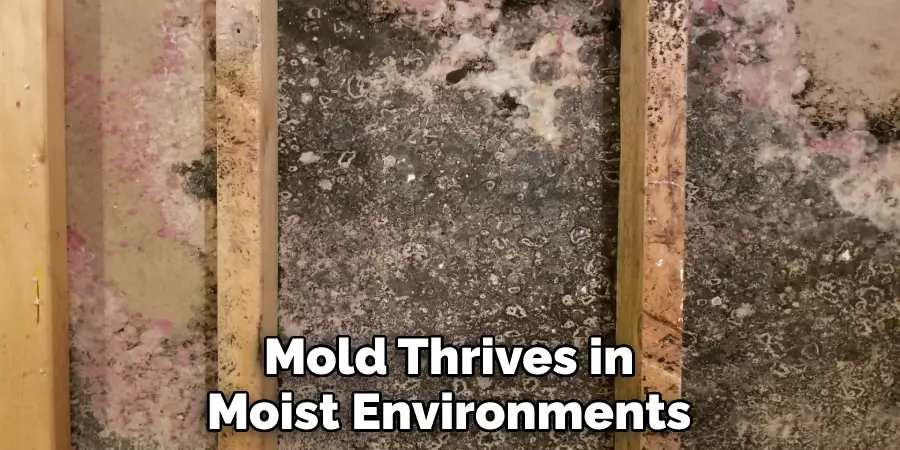
Frequently Asked Questions
Will Vinegar Kill Moldy Leather?
Yes, vinegar will kill mold on leather. Vinegar is a good general cleaner and has been known to remove mildew, bacteria, and other unwanted compounds from many surfaces. You can use it on leather in the same way that you would use it on other surfaces – by spraying it onto the leather, rubbing it in with a cloth, or soaking the leather in the vinegar solution.
Why Do Leather Bags Go Mouldy?
Mould is a fungus that grows on the surface of leather goods, such as purses and shoes. When conditions are right (such as high humidity or low air flow), mold will grow rapidly and cause the bag to turn black, fluffy, and shiny. This is because it produces mycotoxins – toxins made by microorganisms – which can be harmful to your health.
Leather bags should always be stored in a cool, dark place away from moisture sources like waterfalls or showers. You can also try wiping down the surface of the bag with a cloth soaked in vinegar or lemon juice once per week to prevent mold growth.
Can Mold on Leather Be Removed?
Mold can be elusive and it’s often difficult to determine the extent of its damage. However, if you think that your leather may have been exposed to mold, there are a few steps that you can take in order to clean it and prevent further damage.
The first step is to remove as much of the mold as possible using a vacuum cleaner or duster. Try not to use harsh chemicals or abrasives on the leather because this could destroy it. If necessary, follow up with a solvent like acetone or hydrogen peroxide in order for the All-Purpose Mold Cleaner® (MAPC) spray product to work effectively.
When using MAPC, be careful not to inhale its fumes; they are powerful and potentially toxic. Instead, sprays conserve propellant by dispersing its ingredients over an area rather than blasting them into the air like aerosol cans do.
What Kills Mold Instantly?
There are many things that can kill mold instantly, but the most common and effective methods include steam cleaning, using a bleach solution to sanitize surfaces or clothes, and 30% hydrogen peroxide mixed with water.
Sanitizing your home regularly is one of the best ways to avoid health problems caused by Mold. By wiping down all surfaces with a germicidal cleaner once or twice a month (preferably when you notice an increase in moisture levels), you will be able to prevent mold from growing and spreading. Bleach solutions are also effective at killing Mold as long as they’re used correctly. Make sure not to mix it with other chemicals or use it in high-traffic areas where children may be present. Finally, 30% hydrogen peroxide mixed with water is an affordable option for killing Mold on contact; simply spritz it onto objects or flooring that need disinfection and wait 10 minutes before cleaning them up.

Conclusion
Mold can be a severe issue, and it’s essential to take the necessary precautions when cleaning it up. By following the tips in this article on how to remove mold from leather bag, you can remove mold from your leather bag and restore it to its former glory. If you have tried this method. Let us know how it worked for you.


